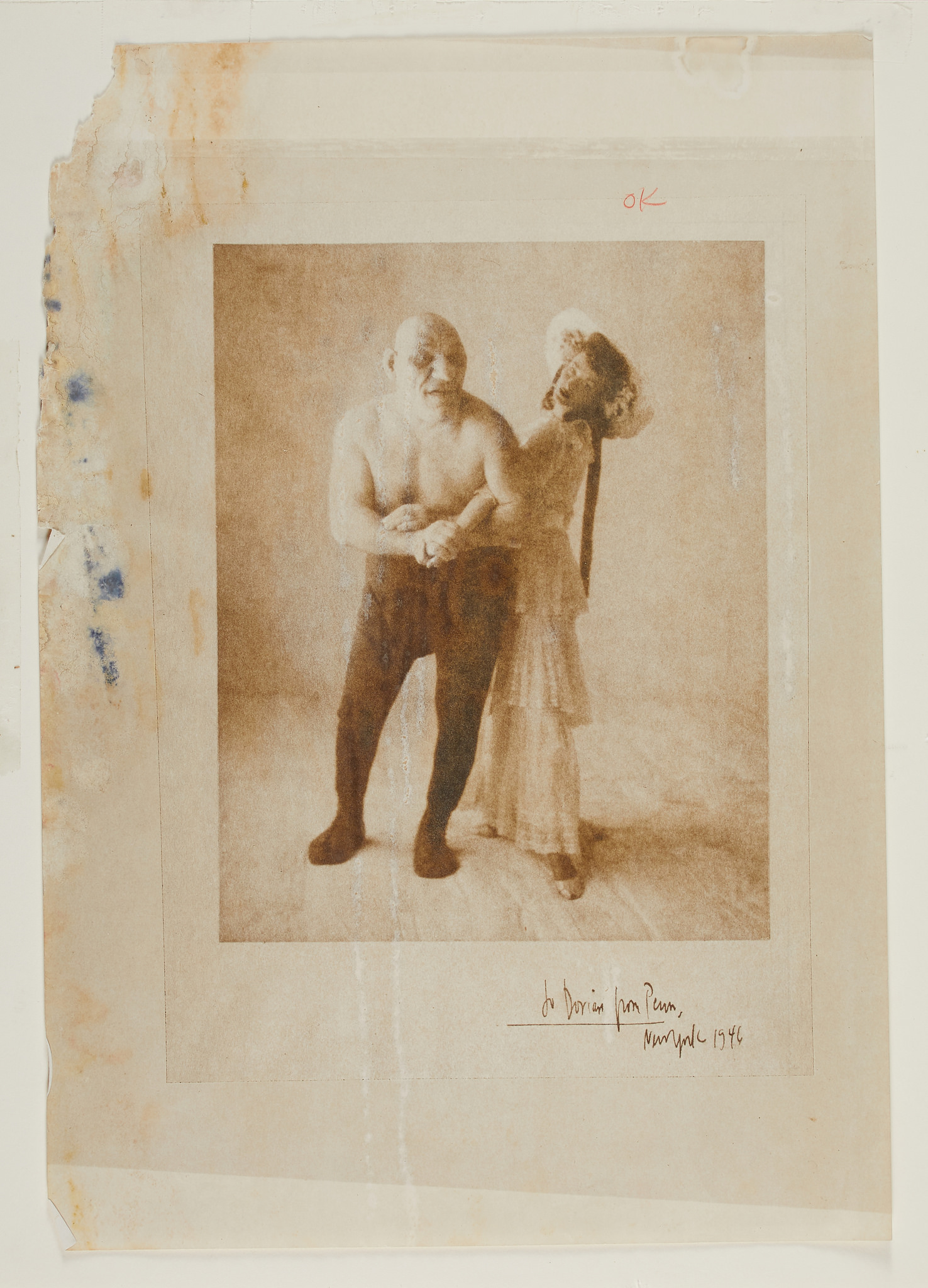When this piece came to The Center, we knew there was a story behind it and our client was happy to share. “The work is from 1946, and is part of a series of photographs that Irving Penn did for Vogue,” our client explained. The photograph features Maurice Tillet and Dorian Leigh, both famous in their time but for very different reasons.
With six Vogue covers to her credit in 1946 alone, Leigh was a recognized model. Tillet was a Russian-born French professional wrestler who rose to prominence as a wrestling star in the 1930s and 1940s. The duo poses a captivating juxtaposition, and their pairing serves as yet another example of Irving Penn’s desire to create alluring scenes of portraiture.
Our client acquired the piece during his time in Paris, where he met Dorian Leigh at a cooking class. They became friends and she had him over for dinner one night. “She was an amazing human being,” he told us. “It was 1996 or 1997 when I acquired the piece. Dorian had a series of pictures hanging up in the hallway of her Paris apartment and I mentioned that I liked them. The next time I came over she gave this piece to me,” he shared. “The last time I was with Dorian in person was at her apartment in Paris. We cracked a bottle of champagne and spent the afternoon together. The next time I saw Dorian was in an Irving Penn exhibition at the Grand Palais in Paris - her portrait was hanging on the wall.”
Hailed by some as one of the Twentieth Century's greatest photographers, Irving Penn is well known for his arresting images and masterful printmaking. Although he was celebrated as one of Vogue magazine’s top photographers for more than sixty years, he also had the reputation of being an intensely private man. Dorian Leigh, on the other hand, was well known for her charismatic personality, flair, and tendency to say whatever was on her mind. This persona is how our client remembers her best.
Although opposites, Leigh had a close professional and warm personal relationship with photographer Irving Penn. In addition to other Vogue titles, Penn and Leigh’s partnership yielded gems that included a series with Maurice Tillet, titled The Angel. The piece our client brought us for treatment appeared to be from this series.
When this Penn photograph came to The Center, it exhibited age-related discoloration with selective silvering in darkened passages. There was a minimal layer of surface soil throughout the entire sheet, and the upper left quadrant exhibited severe deterioration and loss. The piece also exhibited potential evidence of previous mold damage, and a visible strike-through of unknown offset media from the verso of the sheet that had stained the front of the sheet in the upper left corner.
Recto (Front) Before Treatment
Verso (Back) Before Treatment
There were visible scattered stains on the face of the sheet that appeared to have compromised the emulsion layer. There were also scattered handling dents throughout, and the piece was hinged on the verso at the top edge with pressure sensitive tapes.
Our Paper Conservator began by cutting the sheet free from the mount and mechanically removing the existing hinges. She then surface cleaned the piece using the appropriate conservation methods. The mold stains appeared to no longer be active, but the work was treated for mold remediation as a preventative measure. The areas of compromised fibers at the upper left corner were consolidated, and areas requiring additional reinforcement post-consolidation were reinforced at the discretion of our conservator using the appropriate weight paper and adhesive. Next, the piece was humidified and flattened to reduce handling dents and stabilize the overall sheet.
The client elected to move forward with an additional treatment option, which addressed the areas of stained drips and discoloration. These areas were compensated to integrate them into the sheet as a whole.
Before Treatment (Detail)
After Treatment (Detail)
Due to the sensitive nature of the medium, the age-related discoloration and areas of compensation remained visible post-treatment. When conserving important works such as this one, The Center's goal is to use non-invasive and reversible techniques and archival-grade materials, all while operating under the philosophy that less is more.
After Treatment







